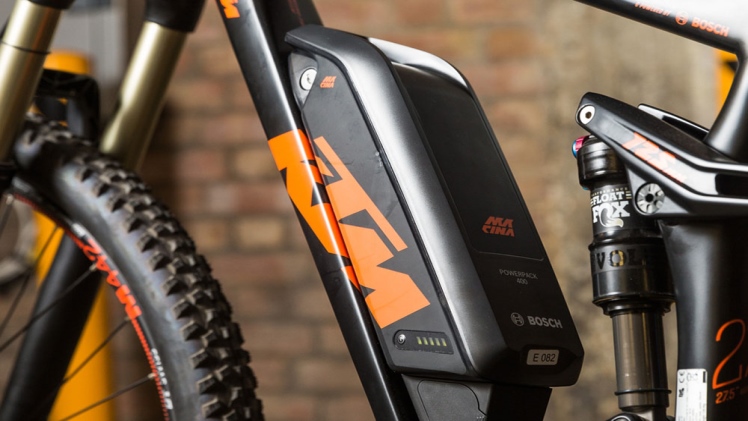Lithium-ion batteries are one of the most popular types of batteries on the market today. They’re used in everything from electric cars to laptops to cell phones… and electric bikes (e-bikes) are no exception.
Why Do E-Bikes Use Li-ion Batteries?
If you’re an avid e-bike rider, you probably already know that electric bikes use lithium-ion batteries. Lithium-ion batteries, also known as li-ion batteries, are one of the most revolutionary inventions of the 21st century.
But what makes these batteries so special?
Well, there are quite a few reasons why lithium-ion batteries are so popular when it comes to electric bikes or other electric applications. These batteries are known for their long service life and high energy density. They’re also lightweight, powerful, and long-lasting than other types of rechargeable batteries.
This is why li-ion batteries have become an industry standard for e-bikes.
How Do Lithium-ion Batteries Work?
At the heart of a li-ion battery is a series of cells made up of a carbon cathode and a metal anode, separated by a thin layer of electrolyte. When the battery is fully charged, the lithium ions are held in place by the carbon.
When the battery is discharged, the lithium ions are released into the surrounding fluid, creating an electric current. This in turn powers the device. The battery then recharges when the lithium ions are re-absorbed into the carbon.
It’s an incredibly simple explanation of an electrical process that has revolutionized the way we use energy. From laptops and mobiles to electric vehicles, lithium-ion batteries are powering the 21st century and beyond!
What is the Lifespan of an E-Bike Battery?
Most e-bike batteries have a lifespan of around 800 charge cycles, though some e-bikes, like the ones offered by Engwe have batteries with up to 1000 charge cycles.
This means that if you’re charging an e-bike battery rated at 1,000 charge cycles (say the Engwe Ep2 Pro) once a day, it should last for around 3 years. Of course, this varies depending on the type of battery you have and how often you use your e-bike.
Tips to Prolong the Life of an E-Bike Battery
Even though lithium-ion batteries are incredibly versatile and long-lasting, they can also be dangerous if not used properly. That’s why we’ve put together a list of tips for using lithium e-bike batteries, to help extend their service life as well as to keep them working like new.
- Always make sure you’re using the right charger. Lithium-ion batteries require a specific type of charger, so using the wrong charger can damage the battery.
- Avoid overcharging your battery. Lithium-ion batteries don’t need to be charged all the way to 100% every time. In fact, this can shorten the lifespan of your battery. So unplug the charger when the battery is topped off to 85-90%.
- Avoid exposure to high temperatures. For instance, avoid riding on extremely hot days and don’t leave your e-bike in a car, as temperatures inside a car can quickly become too high.
- You should never submerge a lithium-ion battery in water. Yes, that’s right! It can shorten the lifespan of your batter or can totally wreck it!
- If you’re storing your e-bike battery, try to keep it within the ideal temperature range. The ideal temperature for storing lithium-ion batteries is between 32 and 77 degrees Fahrenheit.
- Don’t charge your e-bike battery in a cold or hot environment. If the temperature is too high, the battery’s internal electronics can get damaged.
- Besides avoiding overcharging your battery, it’s important to never fully discharge it. The best way is to charge it after every trip. This will help ensure that your battery lasts as long as possible.
What About Exposure to Water?
When it comes to e-bike batteries, a splash of water is fine, but never let them get fully submerged! E-bike batteries are designed to be water-resistant, but not waterproof – meaning they can handle some splashes, but they shouldn’t be submerged in water.
If you do get caught in the rain or accidentally drop your battery in water, make sure to wipe it off thoroughly to dry it off. This will help prevent any water from getting inside the battery, which could cause serious damage.
Even if your battery does get wet, it’s best to leave it to dry for at least 24 hours before using it again. And if you plan on riding in wet conditions, it’s a good idea to invest in a waterproof battery cover to keep your battery dry.
Final Words
Lithium-ion batteries are one of the most popular types of batteries on the market. They are powerful, light, and long lasting, and are used in a variety of applications, from laptops and mobiles to electric cars and bikes. But they need special care to last long!
By following the simple tips mentioned above, you can help ensure your lithium-ion e-bike battery has a long and healthy life!

